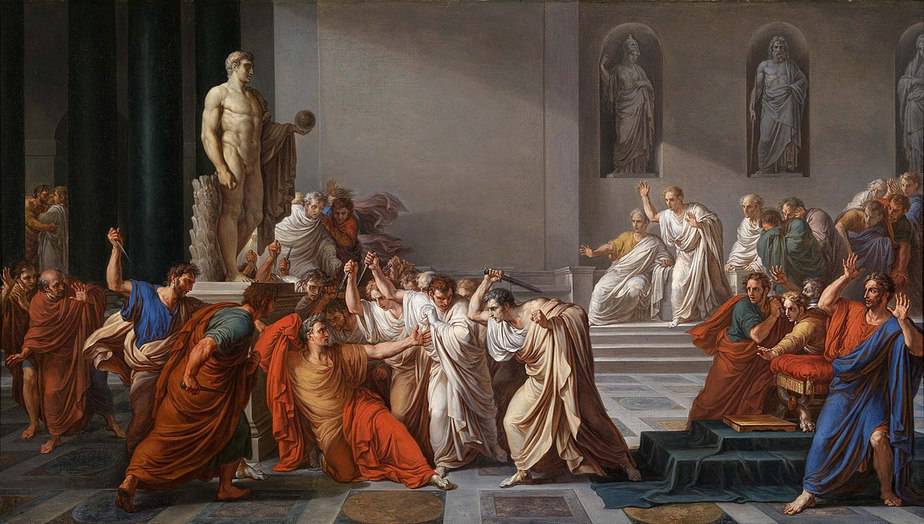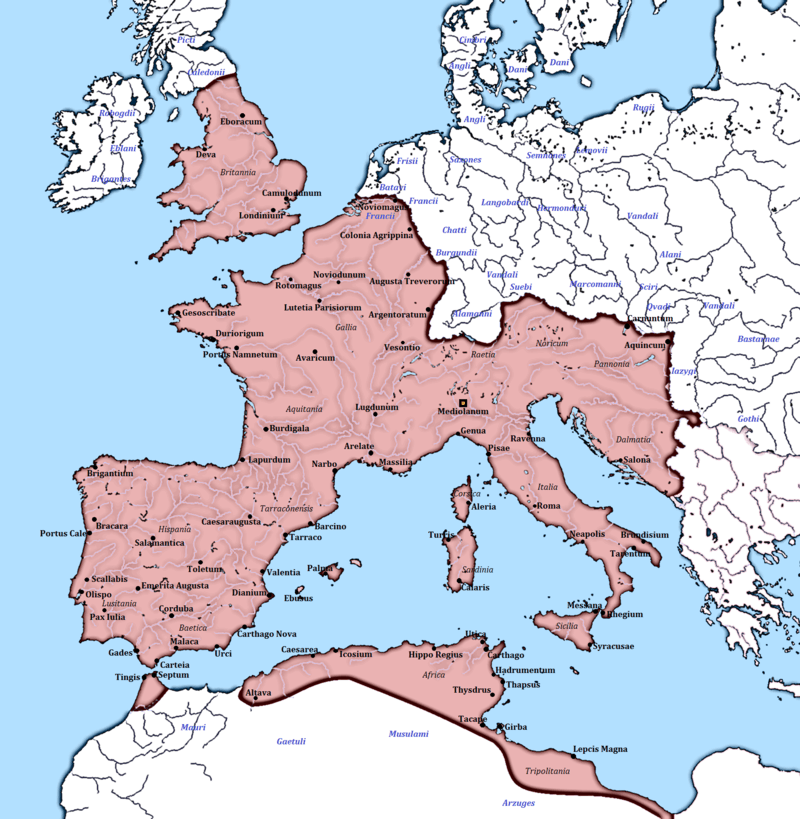Top 10 Historical Facts that happened in Rome
Rome was the largest and most influential city in the ancient times. During the peak of its power Rome grew to rule most of Europe, Western Asia and Northern Africa. Its power and vastness can still be felt today by the many Roman ruins discovered in these regions hence the popular saying, “All roads lead to Rome.”
It is believed that the city of Rome started out as a simple Iron Age hunting village in the middle of the 8th century and grew to be the greatest power houses in the ancient world. At this time the city was dubbed the name “Eternal City.” As the old cliché reminds us Rome wasn’t built in a day. The city of Rome lasted for well over 1000 years before its downfall.
AS we can see the history of Rome is long, rich and complex but to aid you in understanding the city a little better here are the top 10 historical facts that happened in Rome.
1. Rome was founded in 753 BC
Legend has it that the city was founded by the twin sons of Mars, the god of war, Romulus and Remus. Rome is known as the city built on seven hills the two boys were faced with a dilemma of choosing which hill top they show start off building a city of their own. Romulus opted for the Palatine Hill while Remus preferred the Aventine Hill.
The two disagreed on the city’s location and Romulus ended up killing his brother. Romulus built the city of Rome on his preferred hill and named the city after himself. The city was able to grow as Romulus was able to control the land stretching all the way from Britain to Asia Minor and from Rhine River to Egypt. The city of Rome was ruled by a monarchy for 240 years.
Despite this being a rather far-fetched origin story archaeologists are yet to give an exact and agreed upon original founder of Rome.
2. Rome becomes a Republic in 509 BC
This means that Rome got rid of the monarchy system and adopted a government system where its citizens elected representatives called senators to rule on their behalf. This governance structure was copied and modified by other nations over the centuries.
Rome became a republic when the Romans themselves overthrew Etruscan conquerors who ruled over them. At first patricians, the great families, ruled over Rome but this created tension between them and the remaining citizens, plebians. This is because both parties had participated in the downfall of the Etruscan conquerors. To calm the situation the new governance style was adopted.
3. The Law of the twelve tables in 449 BC
The Law of the twelve tablet is a Roman law code that tackles the social, legal and civil rights of the plebians, the common Romans. It was the first recorded Roman law before there were private laws that all Roman citizens had to adhere to.
For some time the Roman lower class felt that the Roman high class were taking advantage of them, this caused tension between the two classes. To calm the situation a commission of 10 men known as Decemviri was appointed to find a solution that both parties could be content with.
The commission wrote a code of law that appeased the needs and concerns of the plebians. The Tablet addressed civil complications with a stress on both private property and family life. From henceforth the rights of the plebians continued to increase until 287 B.C.E when it was declared that laws passed by the Concilium Plebis were binding to both the patricians and plebians.
4. Hannibal invades Italy in 218 BC
Hannibal, one of the best and most talented commanders in history, led the Carthage army in his famous crossing the snowy mountains of the Alps to attack Rome. This marked second Punic War (218 – 202 B.C.E) against the Romans. During the first Punic War the Carthaginians lost to Rome.
During Hannibal’s surprise attack he was able to defeat the Romans; in a cavalry fight next to the river Ticinus against the Scipio’s forces, afterward at the river Trebia and the whole Roman legions in a massive battle near the lake of Trasimeno. Hannibal was planning on conquering and controlling northern Italy.
This war lasted for 15 years before Romans got their bearing, and they started to win the battle. Hannibal and his forces were forced to finally retreat from Italy.
5. Spartacus the gladiator leads the slaves in an uprising in 73 BC
It is also known as the Third Servile War. Among the three major slaves’ revolts which the Rome suppressed it was the most successful.
Contrary to modern day portrayal of Spartacus as a rebel gladiator who was leading a freedom fighting movement the actual Spartacus according to historian Plutarch was a simple man who was tired of being a Roman Slave. Roman slaves were treated poorly as Roman writer Seneca the Younger (4 BCE-65 CE) describes to his Lucilius how even the smallest sound or action on the part of the slave was dictated by the master’s whims.
The original plan of the slaved gladiators including Spartacus himself was to escape. However, their escape plan was discovered by their Roman masters and instead of submitting to execution they opted to fight for their freedom.
6. The end of Roman Republic in 45 BC
We cannot mention Rome and fail to mention the man who signaled the end of the Roman Republic and the rise of the Roman Empire, Gaius Julius Caesar. He became emperor of Rome after he defeats Pompey in Caesar’s civil war after making his famous Crossing of the Rubicon. Caesar’s lineage ruled over Rome for at least 100 years.
Caesar’s civil war came about when the Senate ordered Caesar to step down from his military command and return to Rome. Fearing to lose his immunity from being charged as a criminal for waging unsanctioned wars he opted to cross the Rubicon with the 13th Legion in 49 BC and illegally entering Roman Italy under arms. This began the Caesar’s civil war.
7. Introduction of the first golden coin in 50 BC
The golden coins were known as ‘aureus’ and were in use between the first century B.C to fourth century A.D when it was replaced by the Solidus. The aureus was worth 25 silver denarii and the same size as the denarius but heavier than it.
8. The Assassination of Julius Caesar in 44 BC
Just as dramatic as he acquired the throne he also lost his life in a more dramatic manner. Caesar was assassinated on March 15th, the festival day of Ides March, by his own senators led by Gaius Cassius Longinus, Marcus Junius Brutus and Decimus Junius Brutus.
When Caesar had taken his seat in the Senate the execution began when more than twenty senators stabbed Julius. Such a large number of senators took part to share responsibility. The assassination was a result of the gossip that Caesar wished to be king and put a stop to Roman Republic tradition.
In an ironical twist of events Julius Caesar bled to death on the foot of the statue of his old enemy, Pompey. The death of Caesar resulted in a series of new civil wars and the constitutional government of the Republic.
9. Rome splits into two empires in 395 AD
Rome was struggling to rule the massive lands it had conquered and as result Emperor Diocletian decided to divide the Empire into two parts, the Eastern Roman Empire ruled by Constantinople and the Western Roman Empire ruled by Rome.
10. The Great Fire of Rome in 64 AD
This massive and destructive fire is said to have originated from merchant shops around Rome’s chariot stadium, Circus Maximus, on the eve of 19th July. The fire lasts a whole six days before it was brought under control but reignited and burned for another three days. The fire destroyed two thirds of Rome hence the inspiration behind the saying, “fiddle while Rome burns.”
It is rumored that Emperor Nero ordered the fire to clear space for his new palace. Emperor Nero watched as city burn down as he played his lyre.
Planning a trip to Paris ? Get ready !
These are Amazon’s best-selling travel products that you may need for coming to Paris.
Bookstore
- The best travel book : Rick Steves – Paris 2023 – Learn more here
- Fodor’s Paris 2024 – Learn more here
Travel Gear
- Venture Pal Lightweight Backpack – Learn more here
- Samsonite Winfield 2 28″ Luggage – Learn more here
- Swig Savvy’s Stainless Steel Insulated Water Bottle – Learn more here
Check Amazon’s best-seller list for the most popular travel accessories. We sometimes read this list just to find out what new travel products people are buying.




















